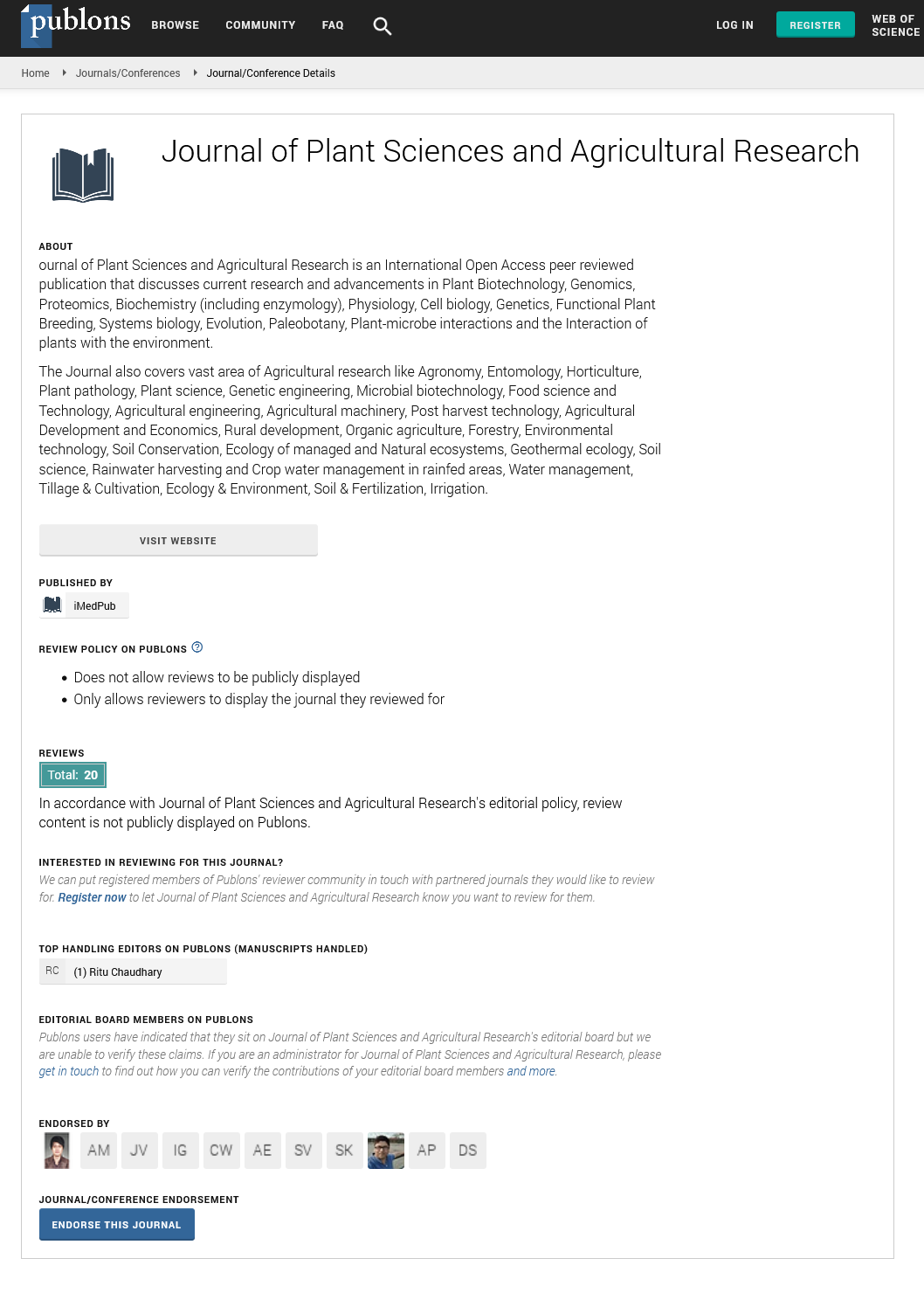Abstract
Editorial Note
Barley is an important food crop in the highlands of different countries. In Ethiopia
barley is grown mainly as a low input staple food crop in the higher altitudes,
on steep slopes, eroded lands, or in moisture stress areas. Barley is the major
cereal crop grown by subsistence farmers in the highlands mainly under rainfed
conditions with minimum or no external inputs. Barley is produced mainly for
human consumption and is one of the most important staple food crops. However,
its productivity is constrained by a number of problems. Among these inadequate
uses of N fertilizer the most important ones. The amount of nitrogen that a barley
crop needs to maximize yield and quality will depend on the seasonal conditions,
soil type, and rotational history of the soil as well as the potential yield of the
crop. The rate of uptake and partition of N is largely determined by supply and
demand during various stages of plant growth. Soil N supply, for example, must
be high at tillering, stem elongation, booting, heading, and grain filling requiring
a greater amount of the development and growth of its reproductive organs and
for an enhanced and high accumulation of proteins in the kernel. Nitrogen is
needed for the early tiller development of barley to set up the crop for high yield
potential. Spilt N application had little effect on yield but decreased lodging and
spike population with increased grain weight. Increased grain yield with increased
in nitrogen level. However, increasing N fertility beyond a certain limit induced
lodging and ultimately decreased grain yield and its components.
Author(s): Susan Bones
Abstract | PDF
Share This Article
Google Scholar citation report
Citations : 135
Journal of Plant Sciences and Agricultural Research peer review process verified at publons
Abstracted/Indexed in
- Google Scholar
- Publons
- Secret Search Engine Labs
Open Access Journals
- Aquaculture & Veterinary Science
- Chemistry & Chemical Sciences
- Clinical Sciences
- Engineering
- General Science
- Genetics & Molecular Biology
- Health Care & Nursing
- Immunology & Microbiology
- Materials Science
- Mathematics & Physics
- Medical Sciences
- Neurology & Psychiatry
- Oncology & Cancer Science
- Pharmaceutical Sciences


